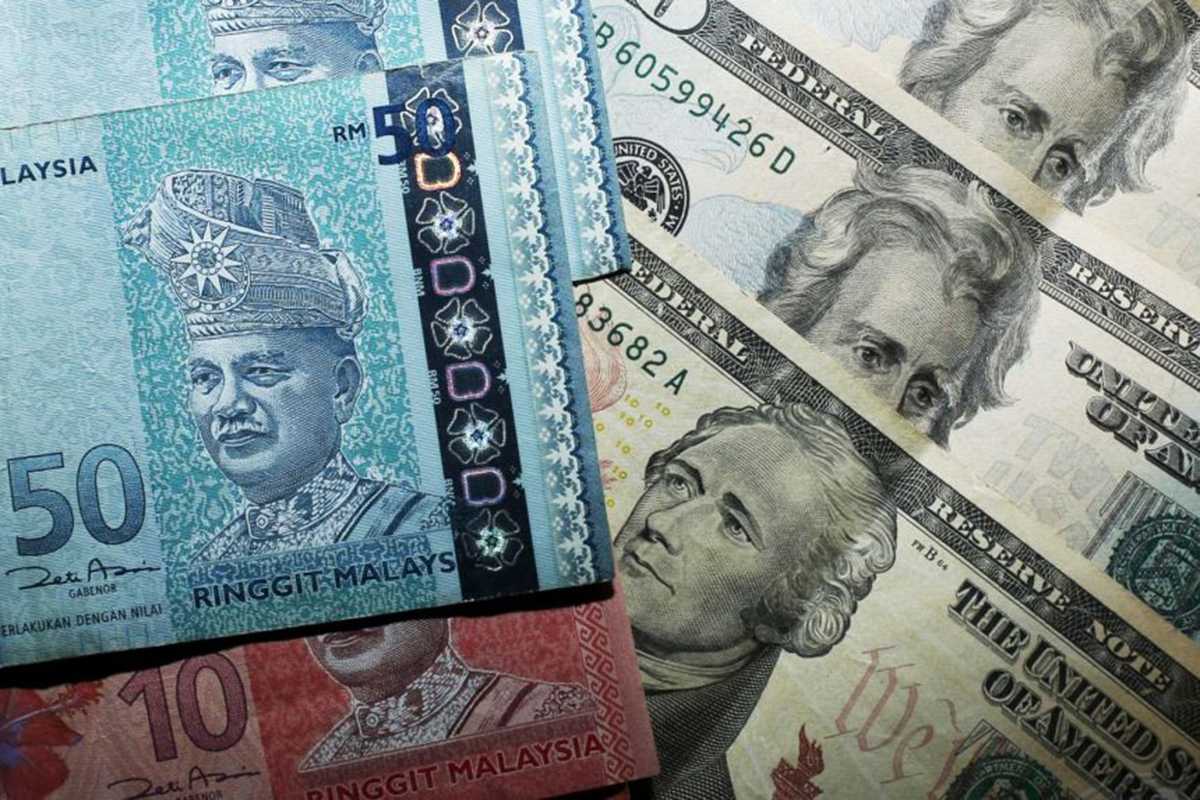
KUALA LUMPUR (Aug 12): The ringgit faces "upside" or weakening risks to 4.4000 against the US dollar, DBS Group said today after taking cue from historical trends, which showed that since 2015 the ringgit has depreciated to 4.4000 per US dollar every time the exchange rate weakens past 4.2000 and as the research firm weighs the impact from factors including the Covid-19 pandemic-driven movement restrictions on the nation's economy.
In a note today, DBS macro strategist Chang Wei Liang and foreign exchange (FX) strategist Philip Wee said DBS expects the ringgit to look past Malaysia's second quarter gross domestic product (GDP) report, which is scheduled to be announced tomorrow (Aug 13).
Today, Chang and Wee said: "The consensus growth rebound to 13.7% y-o-y (year-on-year) in 2Q21 (second quarter of 2021) will be attributed to base effects. On a seasonally adjusted basis, our economist reckoned that real GDP might have shrunken from 1Q21 instead."
"The outlook will be weighed by a third wave of record-high (Covid-19) infections that exceeded 20,000 new cases per day," they said.
At the time of writing today, the ringgit strengthened to 4.2343 against the US dollar after the ringgit was traded between 4.2325 and 4.2420 versus the US dollar so far today.
Over the last one year, the exchange rate was between 3.9957 and 4.2440.
Today, the ringgit however weakened against other currencies. Compared to the Singapore dollar, the ringgit depreciated to 3.1178 and against the Australian dollar, the ringgit weakened to 3.1149.
Malaysia's GDP contracted 0.5% in 1Q21 from a year earlier, according to Bank Negara Malaysia's (BNM) statement on May 11, 2021.
In quarterly terms, the Malaysian economy grew 2.7% in 1Q21 from the preceding 4Q20, according to BNM.
For 2020, the nation's economy contracted 5.6% from a year earlier as 4Q20 GDP shrank 3.4% from a year earlier, BNM said in a statement dated Feb 11, 2021.
Today, Chang and Wee said that in June 2021, the Finance Ministry indicated it would bring down Malaysia's 2021 official GDP growth forecast from the current 6% and 7.5% estimated expansion.
"Consensus has already lowered its forecast to 5.0% from 6.8% at the start of the year. To support growth next year, the government plans to widen the budget deficit to 6.5%-7.0% of GDP from its initial estimate of 6%. Investors will be vigilant of future debt rating downgrades because of the political leadership crisis," Chang and Wee said.
DBS is not alone in predicting the ringgit's weakness against the US dollar as economists weigh the strength of the US dollar against anticipation of interest rate hikes there amid plans to rejuvenate the US economy.
Bernama reported today that Bank Islam Malaysia Bhd economist Adam Mohamed Rahim said the ringgit is expected to continue facing pressure against the US dollar, especially after US lawmakers agreed to a US$1 trillion (about RM4.23 trillion) infrastructure bill to boost the US economy.
"Perhaps some support could be gained from the US Energy Information Administration (EIA) report which showed that crude oil stockpiles fell last week, indicating sustained demand which bodes well for oil prices and subsequently the ringgit in the short run.
"But fuel demand may start to decline later due to the Covid-19 Delta variant, putting downward pressure on oil prices," Adam was quoted as saying.
Meanwhile, Reuters reported today that the US dollar held near a four-month peak against major peers on Thursday after retreating overnight as a cooling in consumer inflation tempered bets for an earlier tightening of US monetary policy.
It was reported that the dollar index, which measures the greenback against a basket of six rivals, was little changed at 92.881, following a 0.19% decline from Wednesday, when it rose as high as 93.195, a level not seen since April 1.
"The consumer price index rose 0.5% last month, in line with economist estimates but down from the 0.9% advance in June. Inflation eased in some areas where Fed (US Federal Reserve) policymakers had indicated price pressures would likely prove temporary, such as used cars.
"The Fed has made a labour market recovery a condition for phasing out its asset purchase programme and raising interest rates, while generally viewing current inflationary pressures as transitory, although there has been debate about how long those pressures could last," Reuters reported.
The Fed is "likely to take some comfort" from the consumer price index report, David de Garis, an analyst at National Australia Bank, was quoted as writing in a note to clients.
It was reported that De Garis said a US quantitative easing taper announcement is likely to come in November or December although it could possibly come next month.
